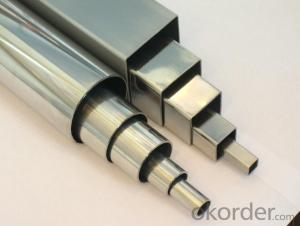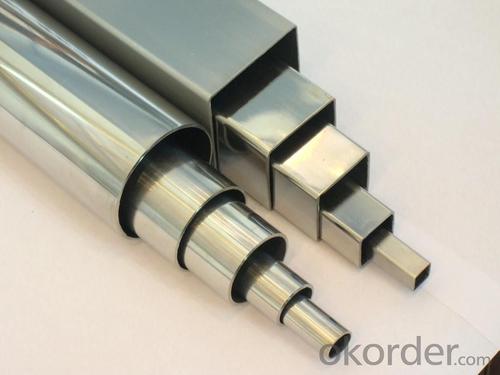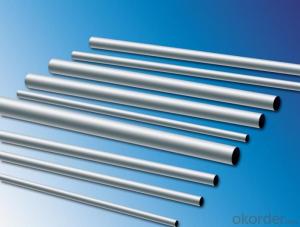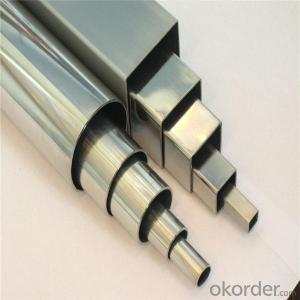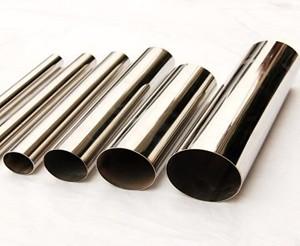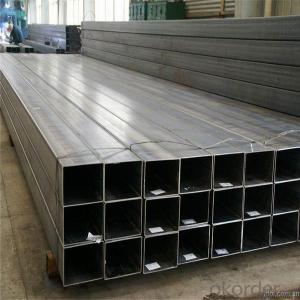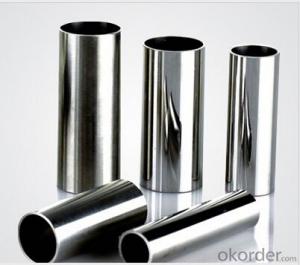Welded/seamless wall thickness 316 stainless steel pipe specs
- Loading Port:
- Shanghai
- Payment Terms:
- TT OR LC
- Min Order Qty:
- 4 m.t.
- Supply Capability:
- 5000 m.t./month
OKorder Service Pledge
OKorder Financial Service
You Might Also Like
Specification
Welded/seamless wall thickness
316 stainless steel pipe specs
Product Description
Product infomation
stainless steel pipe /tube | |
standard | ASTMA554,A249,A269and A270,A312 |
surface | 180G,320G,400G satin /hairline,400G,500G mirror finish |
material grade | 201,202,304,304l,316,316L,309s,310s,316ti,321,904L |
thickness | 0.5mm-50mm |
outer diameter | 10-600mm |
length | 5.8m,6m ,or as customer required |
application | decoration ,construction ,kitchen ,etc |
packaging | plastic wrapper and wooden packaging or as your requirement |
delivery time | 10days after received the deposit of T/T or L/C |
note | we can produce other standard as the customers'requirement |
Chemical composition
----316 stainless steel pipe specs
Stainless Steel pipe/tube grade | |||||||
Grade | Chemical composition | ||||||
C≤ | Si≤ | Mn≤ | P≤ | S≤ | Ni | Cr | |
201 | 0.15 | 1.00 | 5.5-7.5 | 0.5 | 0.03 | 3.50-5.50 | 16.00-18.00 |
202 | 0.15 | 1.00 | 7.5-10.0 | 0.5 | 0.03 | 4.00-6.00 | 17.00-19.00 |
304 | 0.08 | 1.00 | 2.00 | 0.045 | 0.03 | 8.00-11.00 | 18.00-20.00 |
304L | 0.03 | 1.00 | 2.00 | 0.045 | 0.03 | 8.00-12.00 | 18.00-20.00 |
309 | 0.2 | 1.00 | 2.00 | 0.04 | 0.03 | 12.00-15.00 | 22.00-24.00 |
309S | 0.08 | 1.00 | 2.00 | 0.045 | 0.03 | 12.00-15.00 | 22.00-24.00 |
310 | 0.25 | 1.50 | 2.00 | 0.04 | 0.03 | 19.00-22.00 | 24.00-26.00 |
310S | 0.08 | 1.00 | 2.00 | 0.045 | 0.03 | 19.00-22.00 | 24.00-26.00 |
316 | 0.08 | 1.00 | 2.00 | 0.045 | 0.03 | 10.00-14.00 | 16.00-18.00 |
316L | 0.03 | 1.00 | 2.00 | 0.045 | 0.03 | 10.00-14.00 | 16.00-18.00 |
316Ti | 0.08 | 1.00 | 2.00 | 0.045 | 0.03 | 10.00-14.00 | 16.00-18.00 |
2205 | 0.03 | 1.00 | 2.00 | 0.03 | 0.02 | 4.50-6.50 | 22.00-23.00 |
410 | 0.15 | 1.00 | 1.00 | 0.04 | 0.03 | 0.6 | 11.50-13.50 |
430 | 0.12 | 0.12 | 1.00 | 0.04 | 0.03 | 0.6 | 16.00-18.00 |
Products photos--316 stainless steel pipe specs
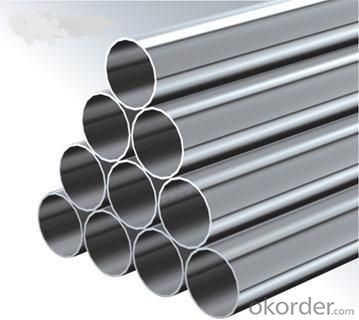
Welded stainless steel pipe/tube
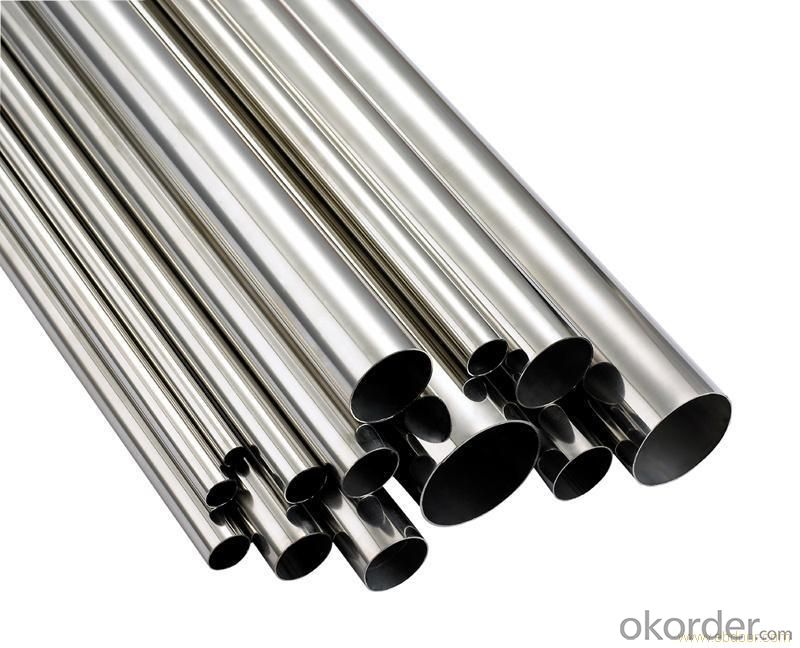
Seamless stainless steel pipe/tube
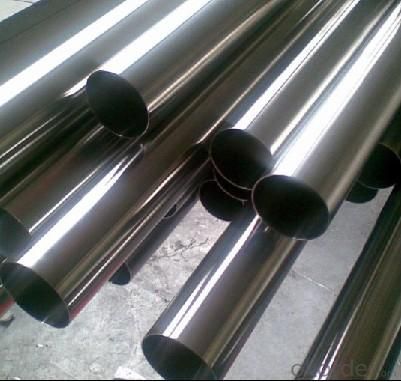
Packaging & Shipping
316 stainless steel pipe specs
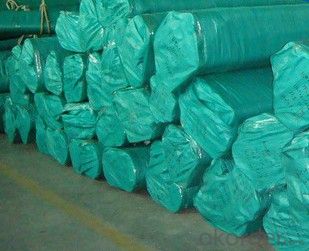
Application:
It is widely used in petroleum, electronics, chemical industry, medicine, textile, food, machinery, building, nuclear power, aerospace, military industry and other industries.
- Q: Can stainless steel pipes be used in power plants?
- Yes, stainless steel pipes can be used in power plants. Stainless steel is highly resistant to corrosion, making it suitable for various applications in power plants where there may be exposure to high temperatures, pressures, and corrosive environments. Stainless steel pipes are commonly used for transporting fluids such as water, steam, and chemicals in power plants. They are also used in various components such as heat exchangers, boilers, condensers, and turbines. The durability, strength, and resistance to corrosion of stainless steel make it a reliable choice for power plant applications.
- Q: Can stainless steel pipes be insulated for soundproofing?
- Indeed, soundproofing stainless steel pipes is possible. By insulating these pipes, the transmission of noise and vibrations through them can be effectively reduced. Several methods and materials are available for insulating the pipes, including acoustic wraps, foam insulation, and mass-loaded vinyl. These materials are specifically designed to absorb or obstruct sound waves, preventing their propagation along the pipes and into the surrounding area. Adequately insulating stainless steel pipes can greatly enhance soundproofing in residential, commercial, or industrial environments, making them a viable and efficient solution for noise reduction.
- Q: How much more expensive is 304 stainless steel than 201?
- 304 now it's about 20000 yuan a ton, and 201 is about 15000 tons.
- Q: What is the difference between SCH and XS stainless steel pipes?
- SCH and XS are both schedules used to classify stainless steel pipes based on their wall thickness. However, the main difference lies in the wall thickness itself. SCH stands for Schedule and is a numerical representation indicating the pipe's wall thickness, while XS stands for Extra Strong and represents pipes with a thicker wall compared to SCH pipes.
- Q: Can stainless steel pipes be coated with other materials?
- Coating stainless steel pipes with different materials is indeed possible. It is a widely adopted practice across diverse industries. The aim behind this coating procedure is to elevate their performance, safeguard against corrosion, enhance visual appeal, or provide supplementary functionalities. Epoxy, polyethylene, PVC, zinc, or ceramic coatings are some of the commonly employed materials for coating stainless steel pipes. These coatings offer numerous advantages, including heightened resistance to corrosion, improved resistance against abrasion, enhanced insulation properties, or diminished friction. The process of coating stainless steel pipes with other materials is typically carried out through techniques like electroplating, hot-dipping, or powder coating. The selection of the coating material and process hinges upon the specific requirements and intended application of the stainless steel pipes.
- Q: How are stainless steel pipes joined or connected?
- Various methods are employed to join or connect stainless steel pipes, depending on the specific application and requirements. Welding is a commonly used technique, in which the pipes are fused together using heat to establish a robust and enduring connection. This can be accomplished through different welding methods, including TIG (Tungsten Inert Gas) or MIG (Metal Inert Gas) welding. Another approach involves threading the ends of the pipes and subsequently fastening them together using pipe fittings. This method is particularly favored for smaller diameter pipes or situations that necessitate disassembly. Additionally, compression fittings can also be utilized to connect stainless steel pipes. This involves the use of a compression ring or ferrule to create a tight seal between the pipes. This method is often employed when connecting pipes with larger diameters or when frequent disassembly is required. Ultimately, the choice of joining or connecting method for stainless steel pipes relies on the specific project requirements, such as pipe size, pressure, temperature, and the need for disassembly.
- Q: How do stainless steel pipes perform in corrosive environments?
- Stainless steel pipes perform exceptionally well in corrosive environments due to their high resistance to corrosion. The presence of chromium in stainless steel forms a protective layer, known as chromium oxide, which acts as a barrier against corrosion. This makes stainless steel pipes highly durable and reliable, even in harsh and corrosive conditions.
- Q: Can stainless steel pipes be used in marine environments?
- Indeed, stainless steel pipes are perfectly suitable for marine environments. With its exceptional resistance to corrosion and rust, stainless steel emerges as the ideal material for marine applications. It can effectively endure the severe conditions of saltwater, including elevated humidity levels, moisture, and exposure to diverse chemicals. Given their durability and enduring performance, stainless steel pipes are extensively utilized in marine vessels, offshore platforms, and various other marine structures. These pipes offer remarkable strength and reliability, even in the face of challenging environments, thus rendering them the preferred choice for marine applications.
- Q: What is the corrosion resistance of stainless steel pipes?
- Stainless steel pipes have excellent corrosion resistance due to the presence of chromium in their composition, which forms a protective oxide layer on the surface. This oxide layer acts as a barrier, preventing the metal from coming into contact with corrosive materials and environments. As a result, stainless steel pipes are highly resistant to corrosion, making them suitable for various applications in industries such as oil and gas, chemical processing, and marine environments.
- Q: Are stainless steel pipes suitable for paper mills?
- Yes, stainless steel pipes are suitable for paper mills. Stainless steel is known for its excellent corrosion resistance, making it ideal for use in environments where there is exposure to moisture, chemicals, and high temperatures. In paper mills, where there is a constant presence of water and chemicals used in the paper-making process, stainless steel pipes offer durability and longevity. They are resistant to rust and corrosion, ensuring that the pipes will not degrade over time, which can lead to leaks or contamination of the paper production. Furthermore, stainless steel pipes are also easy to clean and maintain, which is crucial in paper mills where cleanliness and hygiene are of utmost importance to ensure the quality of the paper products. The smooth surface of stainless steel pipes prevents the buildup of debris, reducing the risk of blockages and improving the flow of materials. Additionally, stainless steel pipes have high strength and can withstand high temperatures, making them suitable for the extreme conditions found in paper mills. They can handle the hot water, steam, and chemicals used in various stages of the paper-making process without deteriorating or losing their structural integrity. Overall, the excellent corrosion resistance, cleanliness, durability, and high-temperature resistance of stainless steel pipes make them highly suitable for use in paper mills, contributing to efficient and reliable paper production processes.
Send your message to us
Welded/seamless wall thickness 316 stainless steel pipe specs
- Loading Port:
- Shanghai
- Payment Terms:
- TT OR LC
- Min Order Qty:
- 4 m.t.
- Supply Capability:
- 5000 m.t./month
OKorder Service Pledge
OKorder Financial Service
Similar products
Hot products
Hot Searches
Related keywords
